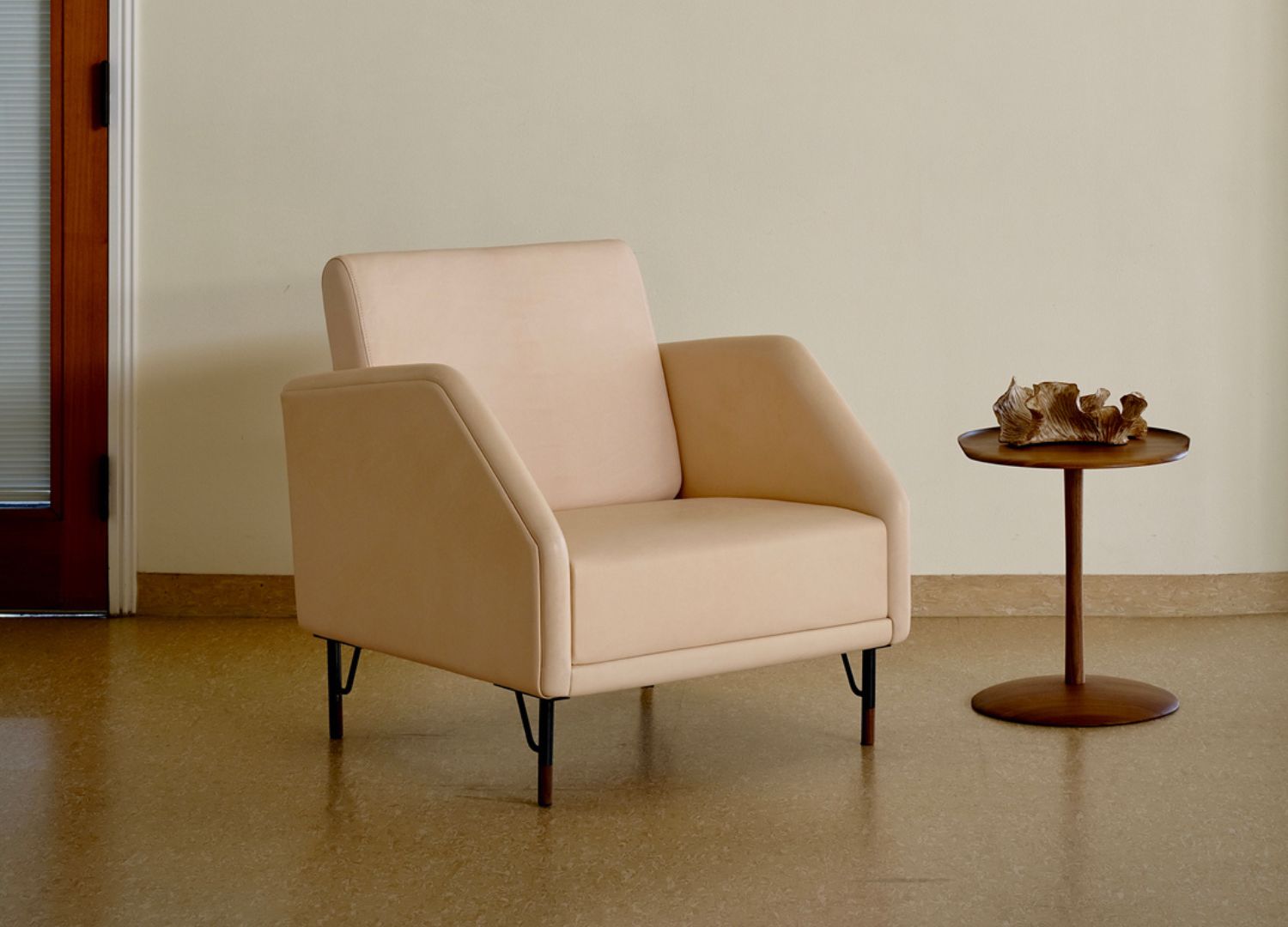77 Chair, a lesser-known masterpiece by Danish designer Finn Juhl
During the last renowned design festival, 3daysofdesign, in Copenhagen, House of Finn Juhl shined the spotlight on their understated masterpiece, the 77 Chair

Exhibiting a refined and minimalist aesthetic, the 77 Chair stands out as Finn Juhl‘s unconventional creation, harkening back to the design principles of the Bauhaus era.
In 1950, Finn Juhl received the prestigious commission to design the interior of the Trusteeship Council Chamber at the newly built United Nations headquarters in New York. The chamber, donated by Denmark, stands as one of the permanent chambers at the UN. During this time, Finn Juhl had established strong connections in the American art and design scene, notably through his friendship with Edgar Kaufmann Jr., the design director of MOMA.
By the chamber’s inauguration in 1952, Finn Juhl had cultivated a significant network of influential design colleagues, including Charles and Ray Eames, Harry Bertoia, Eero Saarinen, George Nelson, and Le Corbusier.

Just a year after the UN headquarters inauguration, Finn Juhl created a comprehensive collection of furniture for the manufacturer Bovirke, embracing a streamlined and more industrial aesthetic. As one of the few Danish designers with international recognition, he had left an indelible mark in the US and brought fresh ideas back home.
Inspired by his American counterparts, Finn Juhl incorporated an international flair into his new furniture designs, featuring slender legs in burnished or painted steel with wooden accents. Vibrant colors also emerged as a distinctive element in Finn Juhl’s design universe, adorning steel parts, drawers, cabinets, and textiles, which was unprecedented in Danish design tradition at the time.
[ Read also House of Finn Juhl: the revolutionary work of a self-taught master ]

“The word iconic has become incredibly hard to avoid when it comes to the labelling of the furniture of the famous designers representing the Danish Modern period. However, not everything can be iconic, and there is a need to ensure that the term retains its meaning. The 77 Chair is not iconic. But it still has its legitimacy here in 2023.
It’s an atypical Finn Juhl design that does not feature his usual organic shapes, but instead has a strict graphical design language with clean lines. It’s a good example of how Finn Juhl used a new design language. In fact, we believe that the 77 Chair will transcend the limitations of time precisely due to its understated relevance.” says Hans Henrik Sørensen, co-founder of House of Finn Juhl.

The 77 Series, including the chair, evokes memories of international airport lounges, hotel lobbies from the 1950s and 1960s, as well as architect-designed homes with expansive windows and visually striking interiors.
While the 77 Series is well-documented, the 77 Chair is often overlooked in design literature discussing Finn Juhl’s steel-legged furniture. Instead, the literature primarily focuses on the Table Bench with brass edges, the Sideboard with colored fronts and trays, the Panel System, and notably the Nyhavn Table, which have all achieved classic status in today’s design realm.

However, the 77 Chair signifies a pivotal moment in Danish design. Finn Juhl once again broke away from the conservative language of the Klint School by placing an upholstered body on slender steel legs, giving the furniture an appearance of floating.
Despite its industrial expression, the chair is far from mass-produced. Behind its modest and unassuming exterior lies meticulous craftsmanship and the use of the finest materials.

The House of Finn Juhl produces the relaunched version in Denmark, maintaining the original approach of a solid beech frame, expertly upholstered and hand-stitched using traditional techniques in textile or leather. Both the fixed seat and the loose back cushions feature spring inserts, ensuring both comfort and durability.
















